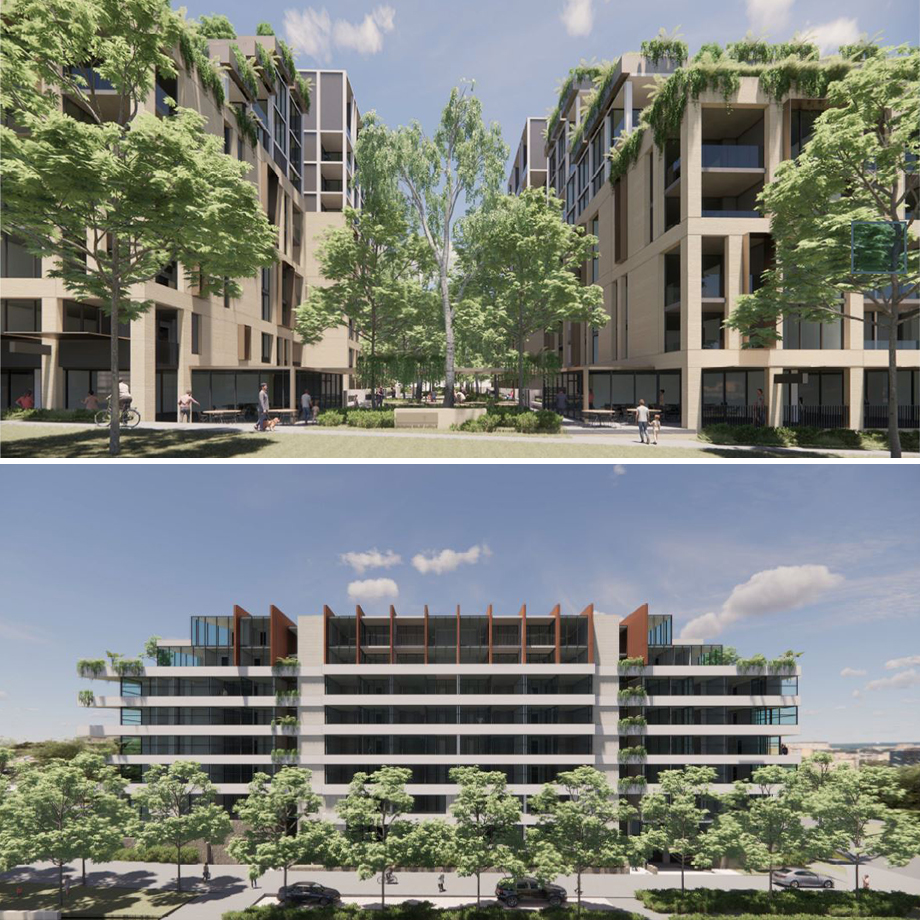Gungahlin Town Centre to Go Off-Grid in $138m Project
Gungahlin’s town centre could go green under plans for a large multi-unit commercial and residential development in block three.
POD Projects Group has lodged plans for 567 multi-unit commercial and residential precinct across four buildings with climate-sensitive design at its heart.
The $138 million development would split the 12,000sq m parcel into three blocks and would be built over three separate stages in the next eight to 10 years.
POD Projects Group says sustainability is high on the agenda as it investigates the installation of a 4MW off-site solar farm to power the apartments in Gungahlin.
Rooftop solar panels are also included in designs to power common areas, while provisions have also been made for electric car and bike chargers to be installed.
“This is our biggest land acquisition to date and proves our continued commitment to the Gungahlin region,” POD Projects Group’s website says.
“We live in Gungahlin, our office is based in Gungahlin, and we have been involved in developing and selling properties in Gungahlin for nearly 30 years. We believe in the future of this region and contributing to its development.”
The plans are for a mix of one, two and three-bedroom units, in addition to six commercial units facing Anthony Rolfe Avenue. Each building would be six storeys on the street, with up to 12 storeys in the middle of the precinct.
Plans are for a mix of residential and serviced apartments, build-to-rent units, and commercial and home business premises. There will be 16,000sq m of rooftop gardens across the four buildings, in addition to landscaped shared zones.
The three phases would be for 150 dwellings on site one, 320 dwellings across two buildings on site two, and 100 dwellings on site three.

POD Projects Group has delivered other developments across the region including Jade, Ruby and Mezzo.
It represents another large-scale development in the area to service a growing demand for housing according to the Housing Industry Association.
“The Australian Capital Territory has benefited from steady population growth and a stable labour market when compared to other jurisdictions,” HIA economist Tom Devitt said.
“This has supported strong demand for new homes and renovation activity, which has been boosted by the HomeBuilder program. Activity in the first home buyer sector has also grown strongly. This is the first time since 2014 that the nation’s capital has topped the Housing Scorecard.”
Devitt said in less than 12 months the ACT had surpassed Victoria to take out the top spot in HIA’s Housing Scorecard Report, based on 13 key residential building indicators including detached and multi-unit building activity, renovations, housing finance and rates of overseas and interstate migration.
“The economic disruption in 2020 reshuffled the Housing Scorecard rankings. The relative strength of residential building activity across the states and territories will be heavily influenced by the take-up of HomeBuilder and other stimulus measures in 2021,” Devitt said.













